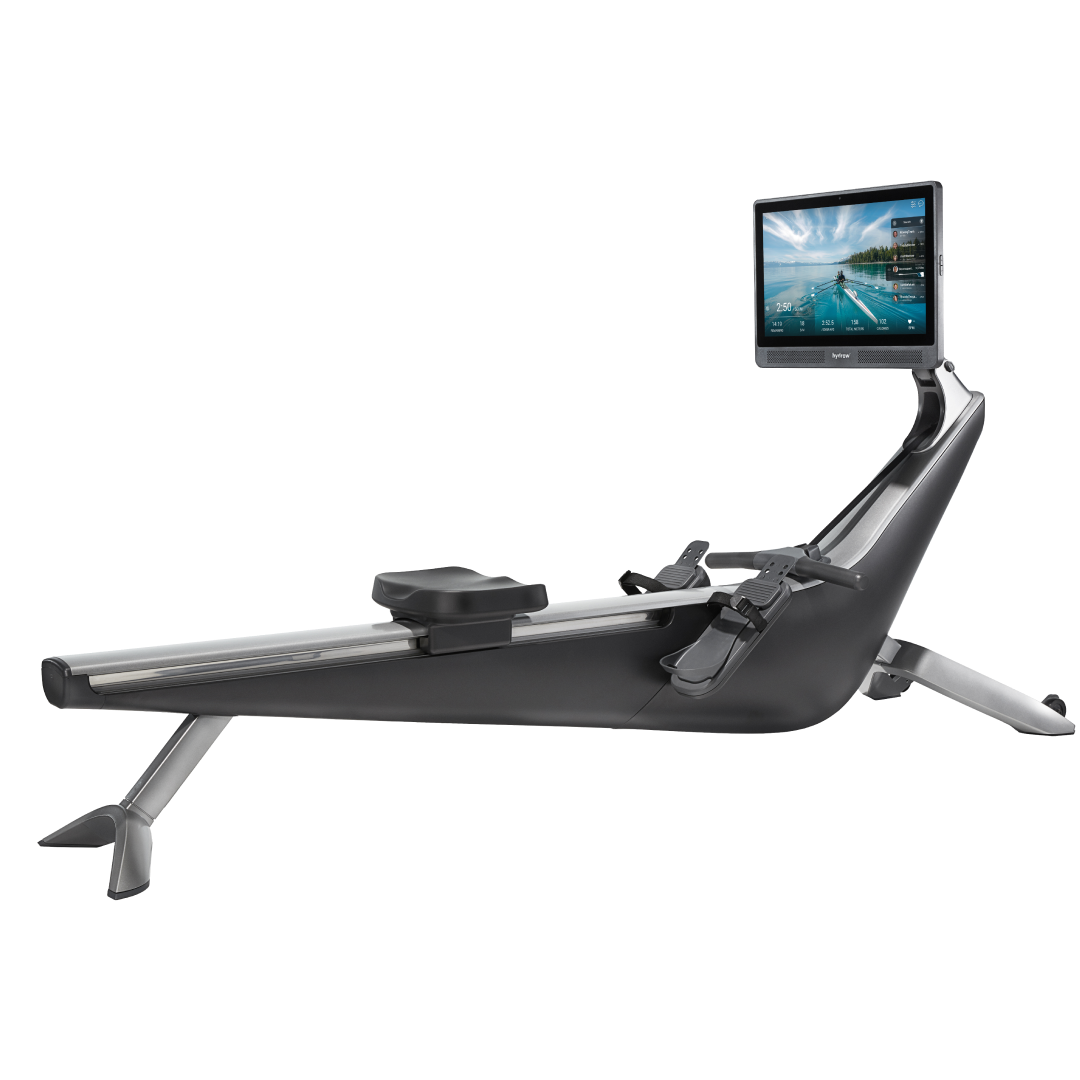How Often Should You Exercise?

Whether you're a fitness beginner, someone who dabbles in living an active lifestyle, or an exercise enthusiast, it can be challenging to know how often to exercise. After all, working out can reduce health risks, help manage weight, and strengthen bones and muscles—but exactly how much time and effort should you put in to maximize these benefits?
In this blog, we’ll explore:
How often should you exercise?
The Centers for Disease Control and Prevention (CDC) recommends getting at least 150 minutes per week of moderate-intensity aerobic activity or 75 minutes a week of vigorous aerobic activity, or a combination of both, preferably spread throughout the week.
Aerobic activity is important because it strengthens the cardiovascular system, helps improve bone and muscle health, and supports mental well-being, all while reducing health risks associated with a sedentary lifestyle. Engaging in regular aerobic exercise can also help maintain a healthy weight and increase overall energy levels.
The CDC also recommends adding moderate- to high-intensity muscle-strengthening activity (such as resistance or weights) at least two days per week. Strength exercises help support bone health, posture, and muscle mass, which is particularly important as we age.
How often you should exercise if you’re living a sedentary lifestyle
If you’re living a mostly sedentary lifestyle, the key is to start slowly. You don’t need to jump straight into a heavy workout routine. Instead, focus on incorporating more movement into your day that eventually accumulates to the target 150 minutes of activity over the course of your week.
For example, you could:
Take the stairs instead of the elevator
Park further away to increase your walking time
Go for a short walk after dinner with your family
Play basketball (or just take shots!)
You can break up this activity into smaller chunks, such as three five-minute walks per day, then gradually increase the time to 10-minute or longer walks per day. Remember, any movement is better than none, and even small steps that get you breathing a little harder will help improve your endurance and encourage a boost in your energy and motivation.
At the start of your fitness journey, building healthier habits is essential, so consider exercising for shorter sessions each day to prioritize consistency and create a sustainable routine. Exploring exercise options that you enjoy is important, too. Ultimately, if you have fun, you are more likely to keep doing it!
The bottom line: Those living a mostly sedentary lifestyle should aim to build up to exercising daily for at least 20 minutes every day, split into doable chunks of physical activity and exercise as needed.
How often you should exercise if you’re living a moderately active lifestyle
If you’re already somewhat active but looking to improve, it’s time to become more deliberate with your exercise routine. Whether you’re a weekend warrior or someone who exercises sporadically, you’ll want to start being mindful of hitting those recommended strength and cardio targets from the CDC. This can be done by switching between cardio and strength days, or you can combine them into a single workout session.
Focus on combining cardio and strength training, slowly increasing your intensity, and monitoring your heart rate zone to level-up your fitness game:
Strength training: Aim for at least two sessions per week. Incorporating bodyweight exercises, resistance bands, or free weights can help you build muscle.
Cardio: Incorporate activities like cycling, swimming, or even playing a sport you enjoy a few times a week.
Intensity: Try incorporating more vigorous activities a few times per week, such as running, rowing, or interval training. Learning how to track your heart rate can help you figure out how your intensity level is stacking up.
Duration: Try to extend a couple exercise sessions for longer to work toward the World Health Organization’s recommendations of 300 minutes per week for greater cardiovascular benefits.
At this stage, it’s also important to mix up your routine to achieve certain health and fitness goals. Try alternating between cardio and strength days to keep your body challenged and get the most benefits out of each of your workouts.

Cardio and strength, combined
Burn calories and build muscle with steady, natural movements.
The bottom line: Those living a moderately active lifestyle should aim to do a minimum of 150 minutes of moderate-intensity aerobic exercise a week alongside two strength-building sessions per week.
How often you should exercise if you’re living a highly active lifestyle
For those who are already very active, the focus should be on variety and balance. While sticking to a favorite workout routine is fine, incorporating different types of exercises helps prevent injury and supports overall health. Try:
Alternating your workouts: For example, if you love running or rowing, mix in some yoga or flexibility exercises to improve balance and core strength.
Balancing your intensity: Alternating between both long bouts of moderate-intensity exercise and vigorous-intensity exercises results in optimal cardiovascular benefits. You’ll also want to be strategic about how you place your workouts so you’re giving your body enough rest after a vigorous workout to complete a moderate one next.
Incorporating flexibility and mobility: Stretching, mobility exercises, yoga, and Pilates can help with flexibility and recovery, which becomes even more important as we age.
The bottom line: If you’re living an active lifestyle, aim for at least 150 to 300 of moderate to vigorous aerobic activity, two to three strength training sessions, and one or two flexibility and balance exercises per week.
Tips for exercising more often
Now that you know how much exercise you should be doing over the course of the week, here comes the hard part—finding that time in your busy schedule to squeeze in those workouts!
Use these tips to make exercising more fun and sustainable:
Find exercises you enjoy
Finding exercises you actually like doing is essential because it increases your likelihood of sticking with a routine and making exercise a regular part of your life. Enjoying an activity—whether it’s walking, rowing, cycling, dancing, or pickleball—can make it easier to incorporate movement into your daily schedule and build long-term habits.

Explore Hydrow’s library of 5,000+ rowing, circuit training, yoga, Pilates, and mobility workouts.
Set a schedule for yourself
At the start of each week, take the time to schedule workouts into your routine so they become a regular part of your day. This will help you be more intentional about the time you dedicate to exercise. And, if you find that your schedule isn’t working for you, don’t be scared to tweak it!
Find exercise that fits in your lifestyle
There is no one-size-fits-all workout routine, so it’s important to personalize your workout schedule based on your current health status, goals, and daily demands. Whether you’re able to break up your activity into smaller bouts throughout the day or prefer longer sessions a few times a week, it’s about creating a plan that works for you.
Flexibility is essential—some people may fit in a quick 10-minute walk during their lunch break, while others might schedule workouts in the early morning or late evening while their kids are asleep. The important thing is to find what fits into your routine so that it becomes a sustainable and enjoyable part of your life.
Related blog: When Is the Best Time of Day to Work Out?
Focus on becoming more active in daily life
Exercising doesn’t always mean hitting the gym for an hour every single day! Even incorporating more movement into your daily life counts as being more physically active, whether you’re gardening, playing with your kids, or dancing while you cook or clean. Be creative and find ways to sneak in more activity throughout your day.
Decrease your sedentary time
Additionally, you can help improve your health by reducing your sedentary time. Small changes like standing up every hour, walking around your office, or incorporating light activities into your daily routine can help break up long periods of sitting. This is especially important for those who work in front of a screen for extended hours.
Find a community
Some people really enjoy the social element of working out and find it incredibly motivating. Join a fitness class or set aside time to walk with a friend to help keep you accountable and make working out more fun.
Mix up your workouts
Doing the same workout every day can cause overuse injuries and muscle imbalances. By mixing up your activities—such as combining strength, cardio, and flexibility—you engage different muscle groups and reduce your risk of burning out and needing to take a break from exercise.
Switching up your workouts also keeps you motivated and helps you stay on track. You’re less likely to get bored and more likely to stick with your routine.
Discover workouts you love with Hydrow
Finding the right balance in your exercise routine and reducing sedentary time is essential for overall health and well-being. Whether you're a fitness beginner or someone more active, it’s important to personalize your routine to fit your lifestyle, focusing on consistent, enjoyable activities that can be easily integrated into your day. Even small adjustments can make a big difference in decreasing sedentary behavior.
Ultimately, a well-rounded approach that includes aerobic activity, strength training, and flexibility exercises will help improve your physical and mental health, making exercise a sustainable and rewarding part of your daily life.
Looking for a smarter way to exercise? Rowing activates 86% of your muscles with every stroke, making it one of the most efficient ways to build total-body strength. In just 20 minutes on a rowing machine, you can get a full-body workout that boosts energy, builds endurance, and helps you move better—on and off the rower.
And with Hydrow, it’s easier than ever to stay consistent. No commute. No waiting for machines. Just expert-led workouts you can do from home, whenever it works for you. Choose from rowing, strength training, mobility, yoga, Pilates, and circuit training workouts, all designed to help you move better and feel stronger, long-term.
Our workouts are filmed on location in stunning waterways around the world and led by world-class Athletes who coach you through every stroke and rep. And with over 5,000 workouts ranging from beginner to advanced, it’s easy to keep progressing no matter your level.
Every movement adds up. Start building strength that lasts with Hydrow.

Real strength keeps moving
Learn how working out with Hydrow can help support a fuller, more active life.









